How to Remove Rust Stains From a Toilet Bowl Naturally
Last Updated on August 6, 2023 by toilethaven
What Causes Rust Stains in Toilets?
A toilet is a pretty sensitive fixture, hygienically speaking. Everybody wants to keep theirs as white as cotton. But that does not always work, especially if you live in an area with hard water. Brown stains will form in the toilet bowl, especially around the rim and at the bottom.
Brown stains in a toilet bowl result from iron in the water. The iron elements react with oxygen to form iron oxide, which is commonly known as rust. The rust is more concentrated around the waterline, forming what’s called a toilet ring.
To remove rust stains from your toilet, scrub it using vinegar, baking soda, a pumice stone, Shaw’s pads, or citric acid. Alternatively, you can use commercial chemical cleaners like CLR and Iron Out but be careful with chemicals since they are bad for your plumbing, health, and septic system.
If you have WD-40 in the house, spray it around the iron stains, then wait 15 or 30 minutes to break down the stains. Use a toilet brush to scrub away the stains, then rinse the bowl. Repeat the process if a few stains don’t come out.
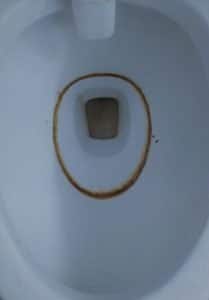
If someone who has never seen rust stains visits your house, they might think you are pretty lousy at housekeeping. The truth is that rust stains are tough to remove and are in no way an indictment of your hygiene standards.
You must be very careful while seeking to remove rust stains from a toilet bowl. If you use a method that scratches your bowl, you will create a better surface for the stains to embed, making it very hard to remove them in the future.
How to Remove Rust stains From a Toilet Bowl
It is always advisable to try and remove the toilet bowl’s rust stains naturally before attempting to use chemical cleaners. Let us look at how you can naturally remove rust stains from a toilet bowl. Remember always to wear rubber gloves while cleaning a toilet
1. Using Vinegar and Baking Soda
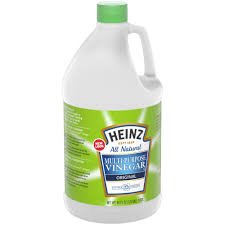
- Remove the water at the bottom of the bowl. We want the vinegar to occupy that space instead and act on the stains directly. Use a plunger or toilet brush to push down as much water as possible. A small amount of water will still be left. Use a sponge or towel to soak it up.
- Slowly pour out vinegar in the bowl until it reaches the waterline mark. Cleaning or distilled vinegar is OK. The cleaning vinegar is normally stronger than the distilled vinegar, but both will work just fine.
- Slowly add a cup of baking soda to the bowl. The baking soda is alkaline, and vinegar is acidic will create a fizzing reaction hence the need to pour it out slowly. If you dump the baking soda suddenly in the bowl, the two will react violently, fill the bowl, and overflow.
- Swish the solution around the bowl using a toilet brush without forgetting the bowl rim. You want to ensure that the stains in the entire bowl are always in contact with the solution. Swish the solution around the bowl occasionally for the next 2 hours. If the stains are severe, you can leave the solution to sit overnight.
- Use a firm-bristled toilet brush to scrub the toilet bowl, focusing more on the stains. Flush the toilet and see how it is coming out.
- This method is quite effective in removing the rust stains. Sometimes you will not manage to remove all the stains at once, and you will need to repeat the process.
2. Using Pumie Scouring Stick
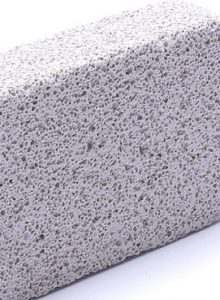
A pumice stone is very effective in removing dry and dead skin, and you will most certainly find it in a beauty salon. It is a lightweight, porous, and abrasive piece of rock.
If the rust stains in your toilet have formed a brown ring around the waterline, then the pumie scouring stick will be your best friend. Unlike vinegar and baking soda, the pumice stone will give you fast/immediate results.
- Dip the pumice stick in water and let it sit there for 15 minutes. Due to its porosity, the pumice stick will absorb so much water, softening it and preventing it from scratching the bowl.
- After 15 minutes, pick up the pumice stick and start scrubbing away the rust stains. Pick one point to start with and work your way around the toilet bowl.
- When starting, you need to be gentle because you don’t want to have scratches on your bowl. A good trick is to start with the front side of the bowl, which is less conspicuous. If you notice the pumice stone scratching the toilet porcelain, stop right away and seek alternative methods. All toilet bowls are not created equal!
3. Using Shaw’s Pads
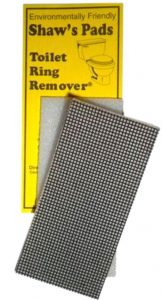
Shaw’s pads were developed by a plumber from Arizona to provide a chemical-free way of removing rust and other hard water stains from toilets and other fixtures. It is safe, environment-friendly, and inexpensive.
To use The Shaw’s pad, wear your gloves, wet the pads with water, and start scrubbing the stains off. A detachable handle is sold separately. The handle enables you to push the pad through a tight space like the toilet bowl rim.
How to Remove Rust Stains From a Toilet Tank.
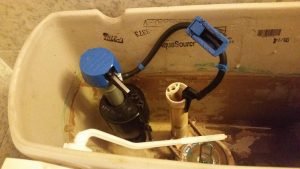
Most people concentrate more on cleaning the toilet bowl and completely forget the toilet tank. Those who remember the tank want to drop some tablets in there and forget about it.
The terrible thing about toilet tank tablets is that most contain chemical substances that eat and wear out the rubber parts of the toilet tank, like the flapper. With time you start having a leaking/running toilet tank.
It is important that you clean your toilet tank because if you don’t, most of the minerals deposited there will start to flow down to the bowl. This is not just iron minerals but others like manganese and calcium, which form scales on the bowl.
Calcium deposits can also block the toilet siphon and rim jets. Water flow from the tank to the bowl will be inhibited, resulting in a slow/weak flushing toilet. The need to clean a toilet tank can, therefore, not be overemphasized.
This is a detailed post on how to get rid of stains from a toilet tank.
How to Prevent Rust Stains From a Toilet Bowl
Here is the thing. Many products are advertised as being able to remove toilet rust stains and rings permanently. That’s just a white lie. No product will remove toilet stains permanently.
Hard water toilet stains and especially toilet bowl rings, are known to recur. This is because the problem is not your cleaning prowess or lack of it or your toilet, but the water flowing in the toilet. As long as hard water keeps flowing in your toilet, rust stains and other hard water stains are bound to form again.
You can put measures in place to ensure that the stains do form in the first place. This is, therefore, a continuous process and not a one-off thing.
Regularly cleaning your toilet bowl with vinegar and baking soda is a sure way of preventing brown rust stains from forming. Preventing the stains from forming in the first place is easier, safer, and cheaper than removing them.